Modern standards of European armored vehicles
European developments in the field of armored platforms are aimed at stopping the threat posed by one European country, which, unlike other countries of the continent, often operating outdated platforms, is rapidly expanding its fleet of armored vehicles.
Many armies want to move to parks that have a higher level of digitization and network connectivity, which is a departure from the largely analogous and disconnected capabilities of the past. This ensures that, like everything else on the battlefield, vehicles will operate as seamless network nodes within a vast array of systems that use modern forces, especially in the NATO structure, within which many European armies must interact.
Particular attention is also paid to increasing fire efficiency, as the military seeks to maximize their offensive capabilities and at the same time maintain the mobility levels necessary for operations on the modern battlefield.
At the proper height
The acquisition of new and the modernization of existing machines is often delayed and extended over years, in connection with which governments and industry seek to ensure that the elements integrated into these projects will extend the life of the machines when they ultimately go into service, as well as any necessary modernization in the future.
“Like building ships, acquiring and upgrading armored vehicles is time-consuming,” confirmed John Strid from Newton Europe, a consulting firm. “Unlike mass production, for example, the automotive or aerospace industry, it turned out to be difficult to automate programs for the manufacture or modernization of armored vehicles.”
Stridom noted that due to the high cost of acquiring new platforms over the past 20 years, armored vehicle modernization projects were implemented more often than procurement programs, although the operation of modernized vehicles has its own characteristics and difficulties. “Modernization programs face the daunting challenges of interoperability, along with restrictions on energy consumption and the electromagnetic spectrum, as well as problems inherent in an outdated architecture that has been designed for a long service life.”
Many recent armored vehicle procurement programs were launched as urgent projects in response to the well-known events that made the European military pay attention to their missing capabilities in this area. For example, fleets of armored vehicles consist of vehicles with the most diverse capabilities and different levels of material and technical support over the entire life cycle.
“If the cost of support was included in some of these programs from the very beginning, then others did not include such support and this imposes additional restrictions on resources,” Strid explained. For example, the British army in accordance with urgent requirements modernized some subsystems of its tank Challenger 2 and now, after 20 years of operation, the machine must go through a life extension program, in accordance with which the new digital architecture, sights and guns will be integrated, although some tanks in the troops have already undergone a partial modernization.
Rheinmetall and BAE Systems, the parent manufacturer of the machine, applied for a life extension program, but in July 2019 it was announced that the two companies had established a joint venture, Rheinmetall BAE Systems Land; in essence, this means that one applicant is applying for the project. However, it still needs to be determined which elements of the two applications will be selected and implemented.
The UK is also upgrading its Warrior BMP under the Capability Sustainment Program, which was left to Lockheed Martin UK and includes the installation of a new turret and gun. This once again demonstrates the British army's attempts to modernize obsolete parks in order to continue their operation in the coming years without the need to purchase new cars.
However, Streedom noted that the scale of such programs creates enormous difficulties in their implementation, especially against the backdrop of a decrease in production opportunities in the UK over the past few years. “Since there is currently no infrastructure in Britain where automated production or modernization could be organized, it is becoming difficult to maintain a schedule, for example, in the 600 modernization program for Warrior machines.”
“There are also difficulties in predicting the total demand and, as a result, aging and material and technical support become the main problems throughout the life of the equipment. This is not uncommon in armored vehicle programs, but it becomes a particular problem due to the limited flexibility of supply chains and significant barriers for suppliers associated with small volumes, ”continued Strid.
At the same time, the UK, purchasing a certain amount of new equipment, is also working to eliminate the shortage of production capacities. For example, the British army will receive a Boxer machine developed by ARTEC (a consortium of Rheinmetall and Krauss-Maffei Wegmann), but already as a full partner. Britain re-joined the program in 2018 after many years of absence and thereby ensured the participation of its industry in the development and final assembly of the platform.
The UK is also in the process of acquiring a new Ajax armored vehicle based on the ASCOD platform, which is being developed in several configurations by General Dynamics UK.
French zoo
Meanwhile, the French army is updating its fleet of armored vehicles under the Scorpion program, which provides for the purchase of new platforms, including the Griffon VBMR 6x6 (universal armored vehicle) and the Jaguar EBRC 6x6 (combat reconnaissance armored vehicle), manufactured by a consortium formed by Arterus Systems and Nexus Systems. In addition, in February 2018, Nexter and Texelis were selected to design and manufacture the VBMR-L 4x4 multipurpose light armored vehicle, which will be the third type delivered under the Scorpion program. The VBMR-L, dubbed Serval, will replace some options for army platforms, such as the VAB 4x4, VLRA and the P4 light trucks. At the beginning of the 2019 year, several VBMR-L prototypes were manufactured and several machines were planned to be delivered by the end of that year.
The Scorpion program is a very large project, according to which the purchase of thousands of platforms is envisaged. It is planned that Griffon VBMR and Jaguar EBRC machines will have uniformity in components of the order of 70%.
In April of 2017, the French Procurement Authority issued the first order for serial production of 20 Jaguar machines, the delivery of which will begin in the 2020 year. The French government is currently awaiting the supply of 300 Jaguar machines, although initially it was planned to buy 248 machines. His law on the military planning of the 2018 of the year revealed that the army will accelerate the supply of EBRC platforms by 2025% by 50, and that all 150 units should be delivered by this year, the first four vehicles should be delivered in 2020 year.
Initially, it was expected that 1722 Griffon armored vehicles would be purchased to replace VAB wheeled armored personnel carriers, but in May 2018, the Department announced that according to the new law this amount would be increased to 1872 units. In the case of successful testing of the VBMR-L platform, the delivery of the first batch of 108 units will take place in 2022, then 154 machines in 2023, 112 in 2024 and 115 in 2025, that is, all 489 machines. During mass production, additional orders can be placed based on the needs declared by the army to 2000 VBMR-L platforms.
The law implies that the army will additionally purchase 156 Griffon cars and 40 Jaguar cars by the 2025 year, that is, a total of 8 Griffon, 936 Jaguar and 150 VBMR-L will be delivered in the coming 489 years.
In June 2017, Belgium announced that it would purchase 60 Jaguar machines and 417 Griffon machines, which will enter the troops in 2025-2030 years. Later in October of 2018, an order was made for the planned JNuX 60 platforms, although the total number of Griffon platforms was reduced to 382 units.
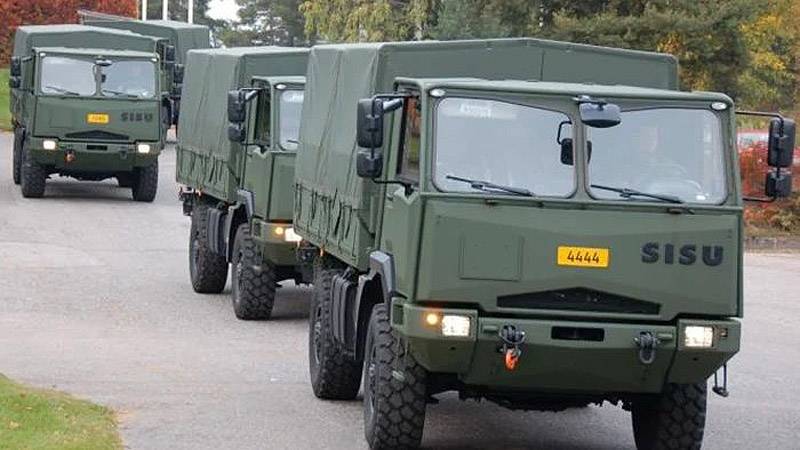
Stain change
Germany developed the main battle tanks of the Leopard series, which are now operated not only in the German army, but also in many foreign countries.
Leopard 1 and 2 are very interested in MBT countries that cannot develop their own MBT on their own and since these tanks are in service with many of them, they are being modernized as part of numerous projects with the aim of extending the life of the platform until the choice of platforms for their replacement.
Germany is upgrading its Leopard 2 tanks to the 2A7V / 2A7V + standard. These works are carried out by KMW and Rheinmetall, although only one was selected by other countries; for example, Poland chose Rheinmetall to upgrade its fleet.
The head tank manufacturer, KMW, in May 2017 received a contract to upgrade 104 German Leopard 2 vehicles worth 760 million euros, followed in September 2017 by a contract with Rheinmetall to assist in this work. The agreement provides for the modernization of a total of 68 Leopard 2A4 tanks, 16 2A6 tanks and 20 2A7 tanks and bringing them to the 2A7V standard. The program provides for the integration of new computers of the fire control system and control panels, as well as the installation of a new laser rangefinder and thermal imaging device.
Rheinmetall also received a contract for the supply of new L55A1 guns for the 2A4 tanks, which will allow the Leopard to fire high-velocity armor-piercing ammunition, as well as the new universal DM11 programmable shell developed by Rheinmetall. The first modernized machines should be delivered in 2020 year.
In April 2019, the company received a contract for the modernization of the 101 tank in the A6 version for Germany, worth about 300 million euros. Under the terms of the transaction, KMW will update the operational platform concept, sighting system, fire control system, as well as the chassis. All machines must be re-delivered by year 2026.
In addition, France and Germany are developing the next generation MBT, tentatively designated the Main Ground Combat System, which will replace the Leopard 2 and Leclerc tanks in service with these two countries.
The concept of the machine, based on the Leopard 2 tank body with a Leclerc tower, was presented by KMW and Nexter at the Eurosatory 2018 in Paris under the name EMBT (European Main Battle Tank - European main battle tank). It aims to strengthen cooperation between the two countries, which have recently launched a number of projects to replace existing systems, including a new generation fighter.
MBT is probably the main armed platform that many countries would like to operate, but in reality the number of options available to the ground forces who want to buy a completely new system is quite limited. Therefore, the modernization of existing vehicles is the option that some countries choose to reduce their backlog in anticipation of next-generation tanks, such as EMWT.
Norway, for example, is at a crossroads with its Leopard 2 tanks, and there is ongoing debate over whether the army will seek a new replacement or find an interim solution that can solve the problem of aging machines. According to reports, the modernization program for this platform was rejected by the government in the middle of the 2018 year, but in December of the same year a request was issued for information on the program for extending the life of tanks. However, a decision still needs to be made about how the country will maintain the combat potential of its MBTs outside the framework of this initiative to combat aging technology.
Almost new
The “new or modernized” dilemma is especially obvious to those who are currently exploiting Soviet-era equipment, for example, the armies of Eastern and Central Europe. In general, many of these countries are striving to move to machines that are standard in NATO countries. However, here they are faced with a number of problems, including the timing of procurement programs and rather “biting” prices.
Although many countries would not mind buying new equipment, but some of them, including Latvia and Slovenia, are facing a procurement problem, while the Czech Republic, Hungary and Lithuania are developing their way as part of the MBT, BMP, 4x4 and 8x8 configuration armored programs.
In the 2018 year, Latvia preferred the GTP 4x4 truck of the Finnish company Sisu Auto, which beat the HMMWV from AM General, the Cobra from Otokar and the Marauder from the Paramount Group, but rival protests led the government to suspend the program until all the “misunderstandings” that took place in the process of choosing. After making this decision, practically no information is received, but, in the end, time will tell what the consequences will be for this competition and whether this program will be re-launched.
Meanwhile, in February 2018, Slovenia selected the Boxer 8x8 armored vehicle to form two new mechanized infantry fighting units. The country needs 48 infantry fighting vehicles, the first batch should be delivered by the end of the 2020 year. However, the government confirmed in January 2019 that the program was suspended until further notice. This is supposed to be due to a reassessment of needs, as the choice was made based on outdated queries made many years ago.
Lithuania has so far received two Boxer machines from the 88 pieces ordered, which will ultimately be delivered in four configurations: a squad car, a platoon car, a control room and a company commander machine. The Baltic state has also made a request for the purchase of 200 light tactical armored vehicles of the American company Oshkosh, the financing of which in the amount of 142 million euros is expected to begin in 2020 year.
The Czech Republic also has a need for 210 new BMPs and 62 Titus 6x6 armored vehicles. The local company Eldis will supply Titus platforms under a license agreement with the French Nexter. The delivery of the BMP, which will replace the BVP-2 armored vehicles based on the Soviet BMP-2, is claimed by several teams under the leadership of BAE Systems, General Dynamics Europe Land Systems, Rheinmetall and PSM (a joint venture of Rheinmetall and KMW). These teams offer CV90, ASCOD, Lynx KF41, and Puma, respectively. A number of agreements were concluded with them on joint work with the Czech industry and the transfer of work to the country's production sites.
Signed and are in the process of implementing contracts for the supply of equipment in other countries. In January 2019, it was announced that KMW had signed a contract with Hungary to supply 44 new tanks in the Leopard 2A7 + variant with the aim of replacing the Soviet T-72, as well as 24 new PzH 2000 howitzers.
Under the contract, Hungary will also purchase 12 OBT Leopard2 A4 from KMW's warehouses for training purposes. According to the manufacturer, the Leopard 2A7 + tank provides passive round-robin protection against such threats as, for example, directional landmines, mines, and rocket-propelled grenades. It is also equipped with advanced optoelectronic devices for round-the-clock surveillance over long distances. The PzH 2000 howitzer is armed with the 155-mm / L52 gun, the ammunition handling of the 60 rounds is fully automatic, which ensures high rate of fire.
Next decade
Over the next ten years, the European military intends to invest more in the modernization of its armored vehicles in order to meet the requirements of a potential conflict with an almost equal enemy. According to some reports, this will increase the region’s share in this sector from 5,2 billion in 2019 to 7,1 billion in 2029, making it the second largest market in the world.
Increased service life
While the total expenditures of the four countries of the region (France, Germany, Italy and the United Kingdom), which allocate the most funds for military needs, account for 56% of the global expenditures for armored vehicles, the trend towards an increase in investments in these platforms is also visible in other countries , in particular in the states of Central and Eastern Europe.
Alarmed by the prospects of a conflict with Russia, the military of these countries seek to replace the fleets of obsolete Soviet-era vehicles with modern platforms that are compatible with NATO standards. These new trends will create new opportunities and support European industry amid curtailment of programs in other regions.
According to forecasts, the largest financial resources will be invested in tracked armored personnel carriers / infantry fighting vehicles and MBT; tank costs are expected to rise from 0,6 to 2 billion dollars by 2029. With the end of the Cold War and the predominance of counterinsurgency, many countries have delayed the replacement of their tracked platforms. As a result, there was an urgent need for major modernization in order to ensure the relevance of obsolete equipment from European countries in the near future, until the purchase of new generation platforms begins.
Uneven trajectory
Despite the revival of the market for heavier tracked vehicles, the cost of wheeled armored vehicles is projected to remain unchanged at 41% of total costs. Suppliers in this sector, producing a wide range of platforms, ranging from 4x4 patrol vehicles to 8x8 heavy infantry fighting vehicles, have adapted to the changing needs of European countries.
Due to the fact that the market for MRAP class vehicles continues to decline after the withdrawal of troops from Iraq and Afghanistan, the technologies developed for these vehicles were used to create new generation of protected patrol vehicles and 8x8 infantry fighting vehicles. These platforms are faster to deploy and easier to maintain, while they complement their tracked counterparts perfectly.
The forecast for the armored vehicles market for the 2019-2029 years says that growth in these segments will be most pronounced in the next six years. According to some estimates, European spending in 2025 reached a peak of 7,7 billion dollars. It will be followed by a short-term drop to $ 6,3 billion in the 2026 year, after which a rise to $ 7,1 billion in the 2029 year will begin. This slightly wavy curve reflects the fact that most of the current modernization and large-scale procurement programs currently underway in the region are planned to be either completed or reached their highest point in the middle of the 2020's, which will provoke a slowdown in growth and an immediate decrease in investments in all sectors of the market.
This trend is confirmed by the BTR / BMP 8x8 sector, which was saturated with a huge number of platforms offered by no fewer manufacturers. Considering that the planned service life of most of the platforms is more than 40 years, there will be great difficulties in the market with the offer of new platforms, since the existing tenders are completed.
In addition, based on the long development time of other large projects, for example, the Franco-German main MGCS ground combat system, which is planned to be deployed before the 2035 of the year, the next wave of purchases with a significant increase in costs is expected no earlier than in six years.
Consequently, after the current procurement wave reaches its peak in 2025, tenders in countries such as Bulgaria and the Czech Republic, which are still in the process of selecting the necessary platforms, may become pillars of the armored vehicles market in Europe.
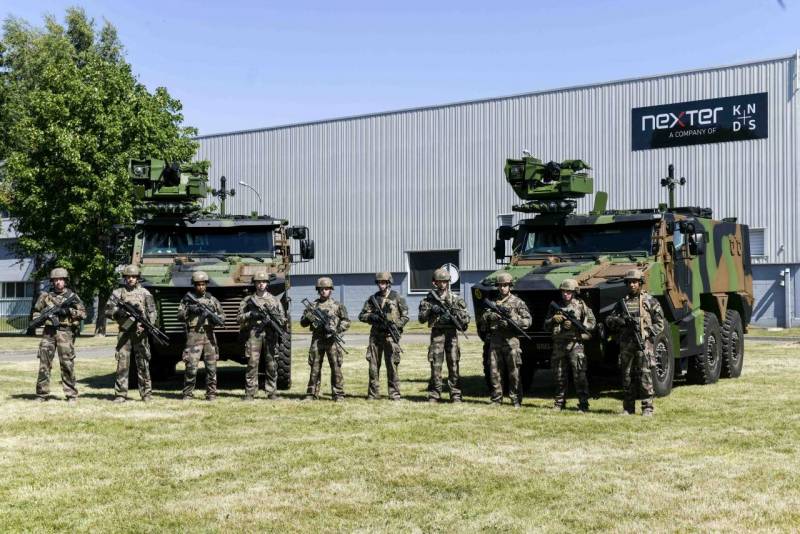
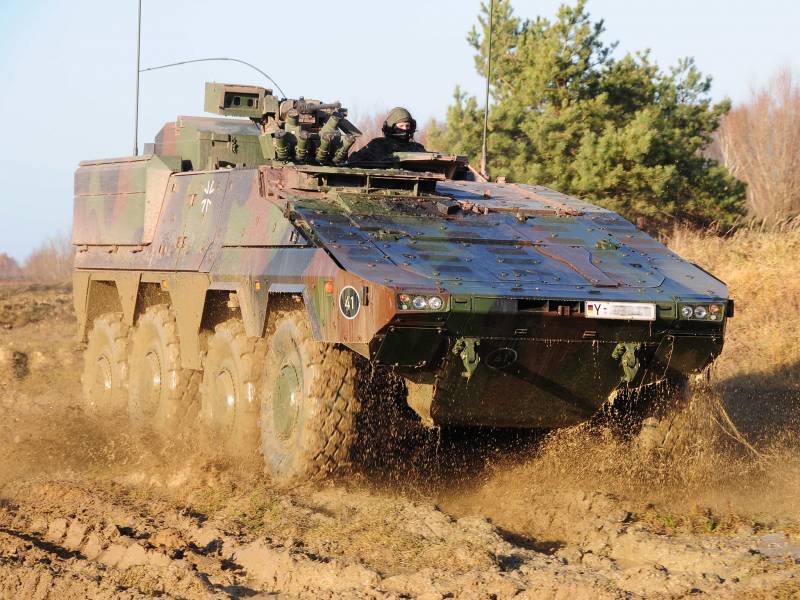
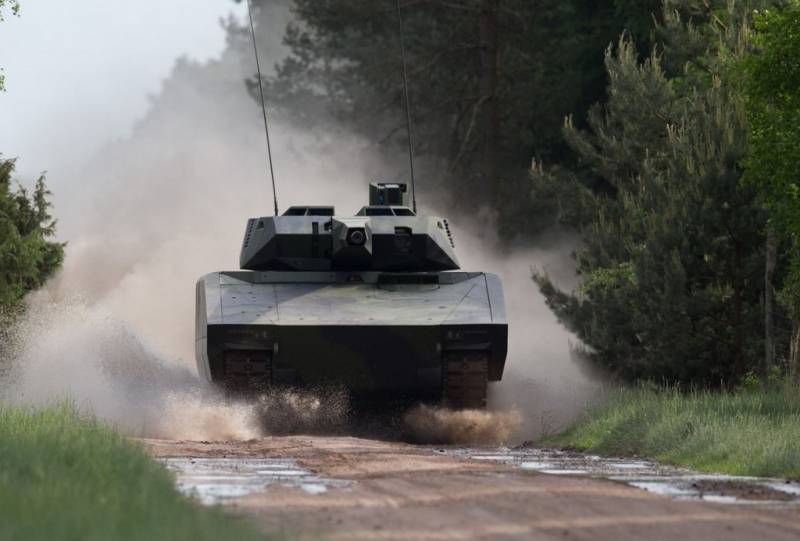
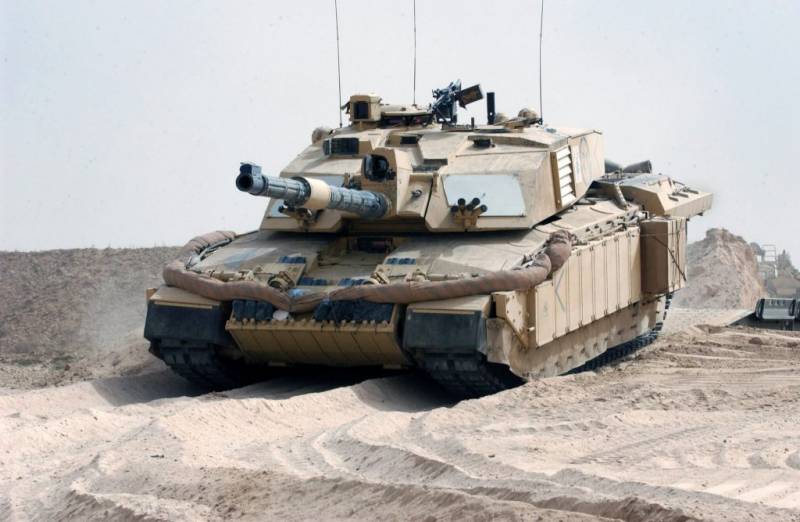
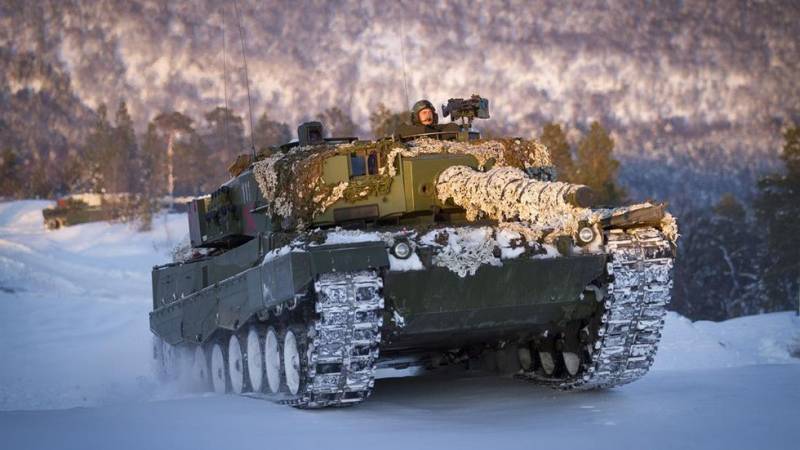
Information